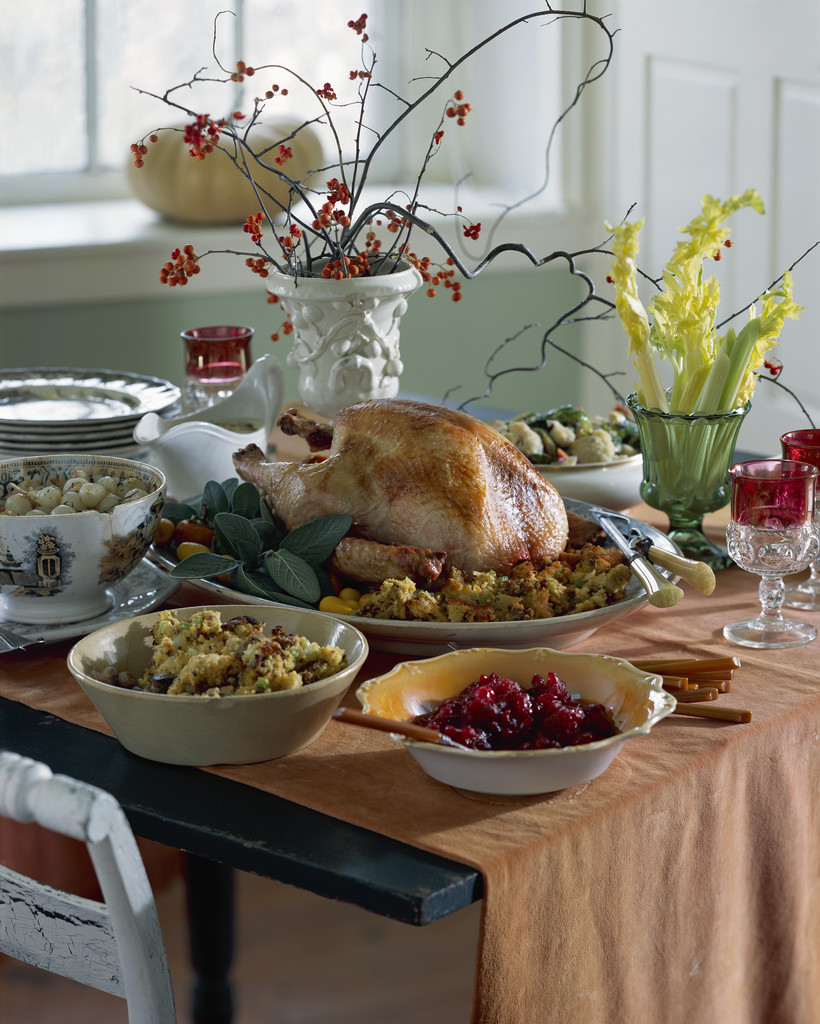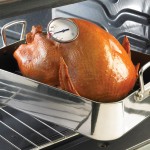by Melanie Taylor | Dec 18, 2013
Normal
0
false
false
false
EN-US
X-NONE
X-NONE
/* Style Definitions */
table.MsoNormalTable
{mso-style-name:”Table Normal”;
mso-tstyle-rowband-size:0;
mso-tstyle-colband-size:0;
mso-style-noshow:yes;
mso-style-priority:99;
mso-style-parent:””;
mso-padding-alt:0in 5.4pt 0in 5.4pt;
mso-para-margin-top:0in;
mso-para-margin-right:0in;
mso-para-margin-bottom:10.0pt;
mso-para-margin-left:0in;
line-height:115%;
mso-pagination:widow-orphan;
font-size:11.0pt;
font-family:”Calibri”,”sans-serif”;
mso-ascii-font-family:Calibri;
mso-ascii-theme-font:minor-latin;
mso-hansi-font-family:Calibri;
mso-hansi-theme-font:minor-latin;}
Normal
0
false
false
false
EN-US
X-NONE
X-NONE
/* Style Definitions */
table.MsoNormalTable
{mso-style-name:”Table Normal”;
mso-tstyle-rowband-size:0;
mso-tstyle-colband-size:0;
mso-style-noshow:yes;
mso-style-priority:99;
mso-style-parent:””;
mso-padding-alt:0in 5.4pt 0in 5.4pt;
mso-para-margin-top:0in;
mso-para-margin-right:0in;
mso-para-margin-bottom:8.0pt;
mso-para-margin-left:0in;
line-height:107%;
mso-pagination:widow-orphan;
font-size:11.0pt;
font-family:”Calibri”,”sans-serif”;
mso-ascii-font-family:Calibri;
mso-ascii-theme-font:minor-latin;
mso-hansi-font-family:Calibri;
mso-hansi-theme-font:minor-latin;}
The holiday season is upon us and that means many of us will be spending more time in the kitchen.

Add that extra-special touch…experiment with a variety of seasonal spices for your holiday meals. And, enjoy the flavors as the aromatic scents fill your home.
If you would like to make an impression with a less-than-ordinary meal, use traditional family dishes as a starting point for your special menu, then add seasonal spices to easy-to-prepare dishes to create a holiday feast that your family and friends will talk about for weeks.
Spices are native to warm, tropical climates and are obtained from roots, flowers, fruits, seeds, or bark. Adding “holiday” spices to your recipes will add just the right amount of Christmas charm along with a rich, warm flavor and aroma that enhances many dishes.
Spices do come with some health benefits, the greatest being that spices serve as flavorful alternatives to salt, fat, and sugar without adding any extra calories to meals. Instead of adding sugar to oatmeal, sweet potatoes, and desserts, try adding spices like cinnamon and allspice. For savory meals, replace salt with spices like black pepper, cumin, and dill seed. Try flavoring foods with spices instead of using breading, gravies, and sauces. Seasoning meats with spices and cooking them on the grill are healthy alternatives to frying and easy, flavorful ways to reduce fat intake. Adopting changes like these can help reduce sodium, fat, and sugar in your diet.
How long will these spices last in your kitchen? Dried spices never actually spoil, but their flavor and aroma fade over time. They should be stored in a cool, dry place in tight containers and away from heat. When cooking, keep the container away from steaming pots to avoid exposure to moisture. Ground spices, such as paprika, cinnamon, and nutmeg, can be kept for 2–3 years. Cinnamon sticks, peppercorns, and any other whole spices can be used for up to 5 years. Always start with small amounts of spices. When adding spices to foods that are served cold, it is important to refrigerate the food for a few hours to ensure that the flavors of the spices are well absorbed.
Now you know using spices is a great way to reduce sodium, sugar, and fat in your diet while adding bold new flavors. It’s a good idea to plan your meals before going to the grocery store so you know which spices you will need. Use the advice above to keep seasonings fresh and flavorful. The examples listed above are just a snapshot of possible uses, so be creative! Follow these tips, and you will spice up your cooking in no time.
Normal
0
false
false
false
EN-US
X-NONE
X-NONE
/* Style Definitions */
table.MsoNormalTable
{mso-style-name:”Table Normal”;
mso-tstyle-rowband-size:0;
mso-tstyle-colband-size:0;
mso-style-noshow:yes;
mso-style-priority:99;
mso-style-parent:””;
mso-padding-alt:0in 5.4pt 0in 5.4pt;
mso-para-margin-top:0in;
mso-para-margin-right:0in;
mso-para-margin-bottom:10.0pt;
mso-para-margin-left:0in;
line-height:115%;
mso-pagination:widow-orphan;
font-size:11.0pt;
font-family:”Calibri”,”sans-serif”;
mso-ascii-font-family:Calibri;
mso-ascii-theme-font:minor-latin;
mso-hansi-font-family:Calibri;
mso-hansi-theme-font:minor-latin;}
Here are few of the traditional holiday spices you may want to try this season:
|
Name
|
Source
|
Flavor
|
Best used
|
Pair with
|
|
Cinnamon
|
Dried bark of the cinnamon tree
|
Pungently sweet
|
Dried sticks or ground powder
|
Breads, cakes, chicken, coffee, cookies, pork, spiced beverages, sweet potatoes, squash, tea, yogurt (often paired with allspice, cloves, and nutmeg)
|
|
Nutmeg
|
Seeds of the nutmeg tree
|
Warm, spicy, sweet
|
Freshly ground
|
Applesauce, baked goods, beverages, cheese dishes, cream dishes, desserts, ground meats, pies, sauces, soups, stews, and many vegetables
|
|
Ginger
|
Roots of the ginger plant
|
Mix of pepper and sweetness
|
Dried powder or freshly grated from root
|
Beets, beverages, breads, cakes, cheese dishes, chutneys, cookies, curries, dipping sauce, dressings, meat, poultry, soups, stews, and yellow vegetables
|
|
Cloves
|
Dried flower buds of the clover tree
|
Sweet or bittersweet
|
Dried and ground
|
Baked goods, beets, chili sauces, cookies, curries, fruit sauces/syrups, gingerbread, squash, and tomato sauces
|
|
Allspice
|
Dried unripe berry of the Pimenta dioica plant (a tropical evergreen tree)
|
Pungent and fragrant (ground allspice releases aromatic notes reminiscent of cinnamon, nutmeg, and cloves)
|
Dried, ground, and fresh leaves
|
Meats, jerk seasoning paste, marinades for chicken and pork, stews, roasts, soups, barbecue and tomato sauces, roasted vegetables, rice, applesauce, fruit compote, oatmeal cookies
|
Normal
0
false
false
false
EN-US
X-NONE
X-NONE
/* Style Definitions */
table.MsoNormalTable
{mso-style-name:”Table Normal”;
mso-tstyle-rowband-size:0;
mso-tstyle-colband-size:0;
mso-style-noshow:yes;
mso-style-priority:99;
mso-style-parent:””;
mso-padding-alt:0in 5.4pt 0in 5.4pt;
mso-para-margin-top:0in;
mso-para-margin-right:0in;
mso-para-margin-bottom:10.0pt;
mso-para-margin-left:0in;
line-height:115%;
mso-pagination:widow-orphan;
font-size:11.0pt;
font-family:”Calibri”,”sans-serif”;
mso-ascii-font-family:Calibri;
mso-ascii-theme-font:minor-latin;
mso-hansi-font-family:Calibri;
mso-hansi-theme-font:minor-latin;}
Be sure to add this spiced tea to your holiday table. Enjoy and Happy Holidays!
Mulled Holiday Tea
Ingredients:
3 quarts simmering water
3 red fruit tea bags
3 regular tea bags
1 orange, cut in quarters and studded with 4 whole cloves
1 lemon, cut in quarters
1/2 cup fresh cranberries
2 cinnamon sticks
Directions:
1. Simmer water in a large pot on the stove.
2. Add all ingredients and turn the heat to low.
3. Heat for a few minutes until the tea is steeped.
4. Remove the tea bags.
5. Serve hot to your guests.
Serves 12. Each 1 cup serving: 2 calories, 0g fat, 0g saturated fat, 0g trans-fat, 0mg cholesterol, 10mg sodium, 0g carbohydrate, 0g fiber, 0g sugars, 0g protein
Source: Shopping for Health: Herbs and Spices, J. Norris, W. Dahl, University of Florida/IFAS Extension.
by Shelley Swenson | Dec 18, 2013

Image by © Royalty-Free/Corbis
The countdown is upon us. The last-minute food preparation is soon to begin. Don’t regret the holidays by overdoing in the food consumption aspect of meals. Avoid having to include a strict eating regimen as a new year’s resolution by making some changes in the way you prepare your food. There are ways to cut back during food preparation to spare calories without changing the taste. Consider these suggestions:
- Turkey: Haven’t bought yours yet? Choose a plain bird over a self-basting bird to lower the sodium content. To ensure a moist bird, leave the skin on while roasting, don’t over-bake the bird, and pour gravy on the meat after carving. This isn’t a calorie savings but we have to concern ourselves with sodium intake every day. Consider the latest recommendation from the 2010 Dietary Guidelines for Americans. It is suggested that we reduce our daily sodium intake to less than 2,300 milligrams (mg) and further reduce intake to 1,500 mg among persons who are 51 and older and those of any age who are African-American or have hypertension, diabetes, or chronic kidney disease. The 1,500 mg recommendation applies to about half of the U.S. population, including children and the majority of adults. (Source: Dietary Guidelines for Americans 2010, USDA, www.dietaryguidelines.gov)
- Gravy: Use a fat-skimmer cup or freeze the juices in a shallow pan so you can remove the fat. You will save around 56 grams of fat per cup!
- Dressing: Use a low-sodium boxed stuffing mix and add sautéed onion, celery, apples, and cooked rice. Add a little more broth and bake. Dressing is my favorite part of the meal so I fill my plate with low-calorie vegetables and fruits before the dressing is passed to me to keep my calories under control.
- Candied yams: Sweeten with apple or orange juice and add ground cinnamon. Realize yams have flavor all by themselves. Wean yourself off the butter and marshmallows and enjoy their wholesome taste.
- Green bean casserole: Green bean casserole is a favorite for many people over the decades. Cook fresh green bean with chunks of potatoes and fat-free half-and-half instead of cream soup. Top with almonds and leave the fried onion rings in the cupboard.
- Mashed potatoes: Use skim milk, garlic powder, and a little Parmesan cheese instead of whole milk and butter. Serve low-calorie margarine instead of butter.
- Pumpkin Dessert: Consider serving the pumpkin custard without a pie shell. Individual baking dishes adorned with a small dollop of whipped cream can save calories without sacrificing the taste of a holiday meal favorite.
Ever wondered about the fat content of different meats and poultry that are traditionally consumed over the holidays? USDA offers this summary:
Normal
0
false
false
false
EN-US
X-NONE
X-NONE
/* Style Definitions */
table.MsoNormalTable
{mso-style-name:”Table Normal”;
mso-tstyle-rowband-size:0;
mso-tstyle-colband-size:0;
mso-style-noshow:yes;
mso-style-priority:99;
mso-style-parent:””;
mso-padding-alt:0in 5.4pt 0in 5.4pt;
mso-para-margin-top:0in;
mso-para-margin-right:0in;
mso-para-margin-bottom:8.0pt;
mso-para-margin-left:0in;
line-height:107%;
mso-pagination:widow-orphan;
font-size:11.0pt;
font-family:”Calibri”,”sans-serif”;
mso-ascii-font-family:Calibri;
mso-ascii-theme-font:minor-latin;
mso-hansi-font-family:Calibri;
mso-hansi-theme-font:minor-latin;}
Fat Facts
For a 3.5 ounce serving Grams of Fat
Roast Beef 15.0
Turkey Wing with Skin 12.3
Dark Turkey Meat with Skin 11.5
Roasted Ham 9.0
Turkey Breast with Skin 7.3
Dark Meat without Skin 7.0
Turkey Breast without Skin 0.7
|
Holiday meals don’t have to pack such a high-calorie punch. Simple makeover tips can lighten a meal and keep the taste good!
by Ginny Hinton | Dec 4, 2013
Normal
0
false
false
false
EN-US
X-NONE
X-NONE
/* Style Definitions */
table.MsoNormalTable
{mso-style-name:”Table Normal”;
mso-tstyle-rowband-size:0;
mso-tstyle-colband-size:0;
mso-style-noshow:yes;
mso-style-priority:99;
mso-style-parent:””;
mso-padding-alt:0in 5.4pt 0in 5.4pt;
mso-para-margin:0in;
mso-para-margin-bottom:.0001pt;
mso-pagination:widow-orphan;
font-size:11.0pt;
font-family:”Calibri”,”sans-serif”;
mso-ascii-font-family:Calibri;
mso-ascii-theme-font:minor-latin;
mso-hansi-font-family:Calibri;
mso-hansi-theme-font:minor-latin;}

Wash your hands with soap and water for at least 20 seconds to reduce the spread of germs.
It seems like such a simple solution. Wash your hands to keep yourself well during this cold and flu season. Unfortunately, even though most people know how important hand washing is, many still don’t follow important hygiene procedures. What do we need to do – and teach our kids to do – to stay well this fall and winter? The answer is: wash frequently and correctly.
Our bodies are covered with bacteria. Some cause disease, while others are actually helpful. Some stay on our skin all the time, while we pick up others through contact with objects such as doorknobs, handles, keyboards, and phones. Those “transient” bacteria and viruses that we pick up can live up to five hours on dry surfaces. Touch your cell phone or scratch an itchy eye and they’re now living in your body!
A study conducted by Russell Research for the American Cleaning Institute® (www.cleaninginstitute.org) found that, even though an overwhelming 97% of parents and children agree that hand washing is one of the most important things they can do to keep from getting sick, they don’t always follow through on that belief. At home, only 66% of parents say they have taught their children to spend 20 seconds washing their hands and a full 33% of parents admitted to not always washing their own hands after leaving the restroom. While many parents have discussed the importance of hand washing with children, the research indicates that they must lead by example and prompt kids every day if the message is going to stick.
The way you wash your hands is just as important as the fact that you wash them at all. Just rinsing them for a couple of seconds and then drying them off helps very little. Soap is important to break up grease and dirt, which can hide thousands of germs. Antibacterial soap isn’t necessary unless you’re a surgeon. Any soap that lathers will work. Wet your hands, soap up, and scrub your hands together vigorously. It’s the friction you create that removes the viruses. Take your time to be sure you’ve removed all the germs. The CDC recommends at least 20 seconds of hand washing. Although that doesn’t sound like a long time, it’s probably much longer than you think. Time yourself the next time you wash your hands. Watch your child to make sure he or she is practicing good hygiene. Remind him or her daily about hand washing because it matters. Get your family in the habit of washing their hands before and after caring for someone who is sick, before and after treating a cut or wound, and after blowing their nose, coughing, or sneezing. Lessons learned at home last a lifetime!
Source: http://www.cdc.gov/handwashing/
by Marjorie Moore | Dec 2, 2013
On November 1-2, 2013, the Northwest District Agriculture and Family and Consumer Sciences (FCS) Agents Program Implementation Teams collaborated to offer classes during the annual Beekeeping Field Day and Tradeshow held in Chipley, FL.

Attendees learn about bee hive maintenance.
This third-annual event was part of the Florida State Beekeepers Association yearly conference and had a total of 196 attendees for the entire three-day event. State Representative Marti Coley and State Senator Greg Evers were keynote speakers at the Bee Conference.
Approximately 163 individuals attended the entire Saturday Beekeeping Field Day and Trade Show, with 114 attending the FCS honey program. Participants rotated among three 35-minute classes – What’s the Buzz about Honey?, Splitting Beehives, and Products of the Hives.
Noted scientist Dr. Jamie Ellis of the University of Florida IFAS Honey Bee Research and Extension Lab presented a class on the state of the beekeeping industry and how Extension works with beekeepers to enhance the success of their honey production and pollination operations.
The FCS Agents presented information on sugar vs. honey, nutrition facts, diabetes and honey, foodborne illnesses, and types of honey. A honey factsheet and recipe cards were developed and distributed. Participants sampled recipes made with honey, including pumpkin bread, honey lemonade, and a honey-glazed snack mix. One batch of the pumpkin bread was made with honey and one batch with sugar to demonstrate the different properties of these two sweeteners.
There was a panel of experts discussing scouting bee hives for insect and disease problems. Also, attendees participated in hands-on hive splitting and hive smoker lighting demonstrations taught by bee inspectors from the Florida Department of Agriculture and Consumer Services.
For more information on honey or beekeeping, please contact your local UF/IFAS Extension Office.
Source: Dr. Marjorie Moore, Family & Consumer Sciences Agent, Bay County, and Matthew Orwat, Horticulture Agent, Washington County.
by Judy Corbus | Nov 26, 2013
Normal
0
false
false
false
EN-US
X-NONE
X-NONE
/* Style Definitions */
table.MsoNormalTable
{mso-style-name:”Table Normal”;
mso-tstyle-rowband-size:0;
mso-tstyle-colband-size:0;
mso-style-noshow:yes;
mso-style-priority:99;
mso-style-parent:””;
mso-padding-alt:0in 5.4pt 0in 5.4pt;
mso-para-margin-top:0in;
mso-para-margin-right:0in;
mso-para-margin-bottom:8.0pt;
mso-para-margin-left:0in;
line-height:107%;
mso-pagination:widow-orphan;
font-size:11.0pt;
font-family:”Calibri”,”sans-serif”;
mso-ascii-font-family:Calibri;
mso-ascii-theme-font:minor-latin;
mso-hansi-font-family:Calibri;
mso-hansi-theme-font:minor-latin;}
 The highlight of many Thanksgiving meals is the turkey –juicy, golden brown, and delicious! Before and after it reaches the table, however, follow these steps to reduce your guests’ risk of foodborne illness.
The highlight of many Thanksgiving meals is the turkey –juicy, golden brown, and delicious! Before and after it reaches the table, however, follow these steps to reduce your guests’ risk of foodborne illness.
Thaw the turkey safely:
- In the refrigerator at 40oF or below– allow 24 hours for every 5 pounds. Place the turkey in a container to prevent the juices from dripping on other foods. Cook within 1-2 days.
- In cold water – submerge the turkey in a leak-proof plastic bag in cold water. Change the water every 30 minutes until the turkey is thawed; allow 30 minutes per pound. Cook turkey immediately after it is thawed.
- In the microwave oven – check your owner’s manual for specific instructions for defrosting a turkey. Plan to cook it immediately after thawing because some areas of the food may become warm and begin to cook during microwaving. Holding partially cooked food is not recommended because any bacteria present would not have been destroyed.
For roast turkey, set the oven temperature no lower than 325°F. For optimum safety, cook stuffing in a casserole. If stuffing your turkey, mix ingredients just before stuffing it; stuff loosely. Additional time is required for the turkey and stuffing to reach a safe minimum internal temperature.
APPROXIMATE COOKING TIMES
(325°F oven temperature)
UNSTUFFED (time in hours)
- 4 to 6 lb. breast — 1 1/2 to 2 1/4
- 6 to 8 lb. breast — 2 1/4 to 3 1/4
- 8 to 12 lbs. — 2 3/4 to 3
- 12 to 14 lbs. — 3 to 3 3/4
- 14 to 18 lbs. — 3 3/4 to 4 1/4
- 18 to 20 lbs. — 4 1/4 to 4 1/2
- 20 to 24 lbs. — 4 1/2 to 5
STUFFED (time in hours)
- 8 to 12 lbs. — 3 to 3 1/2
- 12 to 14 lbs. — 3 1/2 to 4
- 14 to 18 lbs. — 4 to 4 1/4
- 18 to 20 lbs. — 4 1/4 to 4 3/4
- 20 to 24 lbs. — 4 3/4 to 5 1/4
Use a food thermometer to ensure your turkey is safe. Insert thermometer in the innermost part of the thigh, wing, and the thickest part of the breast. The turkey is safe at 165°F. Let the bird stand 20 minutes before removing stuffing and carving.
After the big meal, perishable foods should not be left out of the refrigerator for more than 2 hours. Remove all stuffing from the turkey cavity immediately and refrigerate. Cut turkey into smaller pieces and refrigerate. Slice breast meat; legs and wings may be left whole. Refrigerate potatoes, gravy, and vegetables in shallow containers.
Refrigerator-stored cooked turkey and cooked dishes and gravy should be eaten within 3 to 4 days. Reheat leftovers thoroughly to 165°F or until hot and steaming; bring gravy to a rolling boil. In the microwave oven, cover food and rotate dish so it heats evenly.
For longer-term storage, freeze food in airtight freezer containers or bags and use within 4 to 6 months for best quality.
Questions on Thanksgiving Day?
Ask Karen, the virtual food safety representative, is available 24/7 at AskKaren.gov. Weekdays between 10 a.m. and 4 p.m. ET, the USDA Meat and Poultry Hotline is available at 1-888-MPHotline (1-888-674-6854). On Thanksgiving Day, the Hotline will be open from 8:00 am to 2:00 pm Eastern Time.
Happy Thanksgiving!
Source: USDA Food Safety and Inspection Service, www.fsis.usda.gov.
by Ricki McWilliams | Nov 16, 2013
 The Season of Hallothanksmas is upon us. Yes, I know what you’re thinking: treats, meats, and delicious eats. But let’s shift our way of thinking. What if we turn our focus to family, friends, and making great memories? Here are three things to think about this holiday season:
The Season of Hallothanksmas is upon us. Yes, I know what you’re thinking: treats, meats, and delicious eats. But let’s shift our way of thinking. What if we turn our focus to family, friends, and making great memories? Here are three things to think about this holiday season:
1. Portion control – Have you noticed how portion sizes keep getting bigger with the option to “super-size?” Some portion sizes have increased so much that they now equal the amount recommended for the entire day. With this growth have come increases in waistlines and body weight. Start with figuring out how big your portions really are. Pour/place in a dish the amount you would normally eat then use a measuring cup to find out how much you are actually eating. Take the Portion Distortion Quiz now.
Basic guidelines when measuring portions:
1 cup = baseball
½ cup = light bulb
1 oz or 2 tbsp = golf ball
1 tbsp = silver dollar
3 oz chicken or meat =deck of cards
3 oz fish = checkbook
2. Some easy ways to keep your commitment to healthful eating: Pack your shopping cart with plenty of fresh vegetables like sweet potatoes, winter squash, broccoli, carrots, and green beans. Apples, cranberries, and pears combine easily for a tasty salad, fruit crisp, or topping for the turkey. Reduce fat and calories without sacrificing the taste with these quick substitutions: two egg whites for one egg; low-sodium, fat-free broth in your mashed potatoes; cutting back on added butter or margarine; applesauce for oil, margarine, or butter when baking. Use fat-free yogurt, sour cream, and whipped topping for dips, sauces, and pie toppings. Try sliced almonds in place of fried onion rings for a crunchy topping. Replace regular with reduced-fat or low-fat cheese for salads and casseroles. Substituting ingredients can change the texture of the finished product so be sure to start with small changes.
3. Going to a gathering? With a little preparation, you can still keep off the extra holiday pounds. If you plan on treating yourself later, start your day with a small meal that includes whole grains, fruit, low-fat or fat-free dairy, and protein like eggs, ham, or peanut butter. Don’t starve yourself beforehand. Rather, eat a small, lower-calorie meal or snack so you don’t overdo it at the party. Choose carefully and decide among foods you definitely will eat, those you will sample, and those you will skip. Don’t rush to eat. Socialize and settle into the festivities before you eat. Move your socializing away from the buffet or appetizer trays so you don’t nibble unconsciously.
Sources: www.eatright.org; http://myplate.gov/






